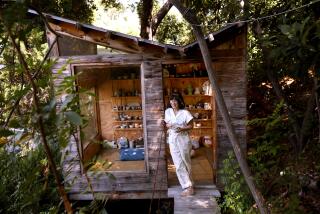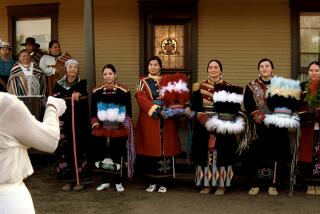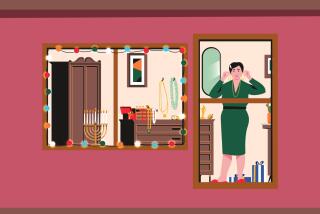Around Home : Native American Beadwork
- Share via
FROM THE BEGINNING, long before the arrival of Europeans in the New World, Native American tribes were producing magnificent beadwork. Tribal artisans (mostly women) worked with shells, stones and porcupine quills. They used almost any material that could be strung or attached to cloth or buckskin: shells, seeds, berries, stone, bone, teeth, plant resins, glass, metal ivory, ceramic and even dried otter’s liver.
Plain or decorated, each bead was wound, woven, inlaid or stitched to a variety of materials. Before 1850, beadwork generally consisted of large white, black or blue “pony beads.” Smaller glass beads, or “seed beads,” were developed after that date and led to further refinement of the craft. In general, the best work was done between 1870 and 1890. Oddly enough, commercial glass beads from Italy were introduced into the Southwest by the Spanish around the middle of the 16th Century, and centuries later they were brought in from Czechoslovakia.
Sophisticated beadwork was consistently produced by the Indians of the Great Plains (the Sioux, Cheyenne and Arapaho, among others) and the Great Lakes areas. Beads were used by the Southwest Indians more sparingly, though often to greater effect; thus an Apache blouse and skirt might have a single band of blue and white beads outlining an ochre-colored cloth area.
Beadwork decorated a variety of objects: Arapaho moccasins; Sioux deerskin dresses; Apache ceremonial costumes and headbands; Hopi kachina dolls; Crow handbags for holding the mirror, hair-parting stick and face paints needed by a young man for dances and other social occasions; Sioux embroidery vests; Cheyenne boots with the “lazy stitch” to produce narrow lines; Comanche women’s boots with light-toned stitching; Cheyenne doctors’ fans; Jicarilla Apache shirts with beads in black and white; Ute bandoleers; Crow lance cases, and, perhaps most glorious of all, Great Plains war bonnets and decorated cradle boards from the Southwest.
Though beadwork is generally not expensive, there are some compelling exceptions. At a November, 1988, sale at Sotheby’s, for example, a pair of beaded Seminole leggings sold for $60,500, something of a record. Of course, beadwork from tribes of the Eastern and Southern United States is much rarer than from the Great Plains and the Southwest, but Native American art of all kinds is undervalued today. There are still many splendid examples for the collector.
Look for Native American beadwork at Taos Indian Trading Co., Wounded Knee Gallery, Nonesuch Gallery and Federico in Santa Monica; Native American Art Gallery in Venice; Don Bennett Antique American Indian Art in Agoura; Sun Stone Gallery in Laguna Beach; Indian Store in Anaheim; Ojai Indian Shop in Ojai; Mike Haskell (Peregrine Galleries) in Santa Barbara, and American Indian Gallery in San Diego.
More to Read
Sign up for Essential California
The most important California stories and recommendations in your inbox every morning.
You may occasionally receive promotional content from the Los Angeles Times.










